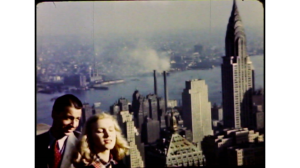
"A blonde model and the sights of New York divide the honors in Othon Goetz's Her Heart's Desire, a pleasant story of the girl who came to the Big City to model and got married instead. Good city footage is quite rare; Mr. Goetz has succeeded in achieving some startling shots of New York's splendors as he follows the thin thread of his story. It is difficult to believe that this blonde would not have found a job — but she lends glamour to a film that otherwise might show considerable weakness." Movie Makers, Dec. 1949, 470.
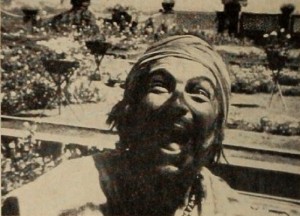
"J. N. Unwalla has chosen a simple morality tale for the theme of this colorful film from India. A beggar pleads for alms from passersby with poor success. There appears suddenly a figure who promises him wealth if he will eschew avarice and greed. As a shower of golden coins overflows his lap, however, he begs for "one dinar more." The point of the tale is proved when this evidence of his greed causes the wealth and the figure to disappear. Although employing interesting camera viewpoints to give diversity, the single setting in a Bombay courtyard suggests a stage play rather than a motion picture." Movie Makers, Dec. 1949, 470.

"The imaginative experiments with animated clay figures begun last year in No Credit have, in this year's Proem, proved out as a suave and wholly integrated art form. The unique and wholly delightful work of Leonard Tregillus and Ralph Luce, jr., has here come handsomely of age — both technically and creatively. Proem, conceived as a preface to the theme of Carroll's Through the Looking Glass, is of far greater filmic stature than its already rented status permits it to be rated." Movie Makers, Dec. 1949, 470.
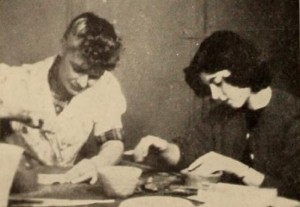
"A joint project of the members of the Motion Picture Photography Class of the Westchester Workshop, in White Plains, N. Y., Recreation Handmade is notable for its evenness of camera work. It presents in a naturally episodic fashion various handiwork classes available to children and adults of the community. If you like to work with your hands, this film will make you eager to enroll in one of the many activities offered — which, of course, is the purpose of its production. A rather full commentary describes how the courses work. Walter Bergmann, as instructor of the motion picture course, proves with his pupils' film that practical movie making can be taught — and taught well." Movie Makers, Dec. 1949, 470-471.
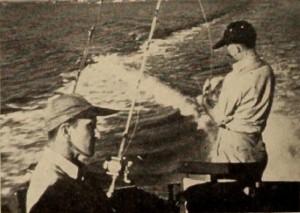
"Al Schmidt's Sail Fishing is a well edited and engagingly pleasant presentation of a theme that might easily get out of hand. Mr. Schmidt has covered all aspects of an exciting sport, including the rarely mentioned sharks. However, the greatest virtue of Sail Fishing is not the film itself but the accompanying narrative, which is delivered calmly and with a good deal of humor. Mr. Schmidt has proved that sharks are exciting in their own right, instead of as a backdrop for a babbling and frenetic narrator." Movie Makers, Dec. 1949, 471.

"An idol stolen from a Chinese temple and the efforts of a loyal retainer to recover it provide George Kirstein with a novel springboard for the unfolding of this unusual travel film. Subsequent events carry the principals from New York to Chicago, through the Southwest to Los Angeles and Hollywood, up the coast to San Francisco and finally back to New York for restoration of the idol. Far from hindering the sightseeing sequences, Mr. Kirstein's device enhances the presentation of this material. While the camera handling is satisfying throughout, tighter editing would speed up the pace and heighten dramatic interest." Movie Makers, Dec. 1949, 471.
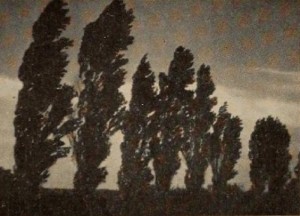
"In Trilogy, Timothy M. Lawler, jr., submits an interesting and, for the most part, successful effort to match romantic verse with appropriately emotional scenes. For his verse, Mr. Lawler has used Kilmer's Trees, Malay's The Wide World and Shelley's Love's Philosophy. The moods of the movie footage are excellent. The verse suffers a little, however, because it is released on the screen (or in narrative readings) a couplet at a time, at varying intervals, thus breaking into the overall rhythm. On the whole, however, Trilogy is a good approach to an attractive and difficult ideal." Movie Makers, Dec. 1949, 471.
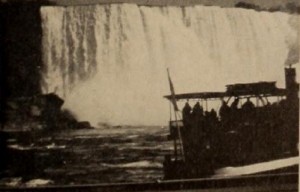
"In Tumbling Waters Leo J. Heffernan has turned his experienced and competent camera on that perennial favorite of travel filmers, Niagara Falls. The result is a sparkling piece of lighthearted showmanship, climaxed by a truly gripping and probably unique sequence filmed amid the swirling mists of the Cave of the Winds. The overall effect of Tumbling Waters, however, was marred for these reviewers by recurring levities of treatment deemed out of key with the essential majesty of the subject." Movie Makers, Dec. 1949, 471-472.
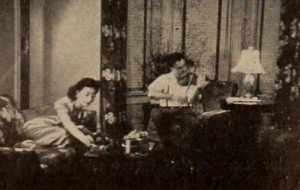
"Using black and white film, Carl D. Frazier has produced a tightly knit and well paced farce of a married couple and a burglar. Excellent lighting of wholly interior settings shows study of the monochrome medium and, properly exploited, how it can result in sparkling results. The acting is adequate for the simple plot, but it is the camera work and editing that make the film above average." Movie Makers, Dec. 1949, 472.
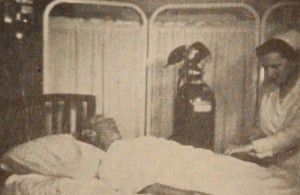
"Efforts of the American Cancer Society both to disseminate accurate information on the disease and to dispel erroneous conceptions form the theme of this unit production by the Amateur Movie Society of Bergen County, in Hackensack, N. J. Based jointly on a case history of neglect and a situation illustrating some baseless fears of cancer, the film shows the many forms of service rendered by the A.C.S. through its local chapters. Handsomely mounted and capably photographed, the picture is a tribute to the technical skill of its director, William Messner, and the cameramen who assisted him. The commentary and music on the sound track ably support the visual message. A tendency towards confusion in the scripting prevents the picture from fulfilling completely the thesis implied in its title." Movie Makers, Dec. 1949, 472.
Total Pages: 299